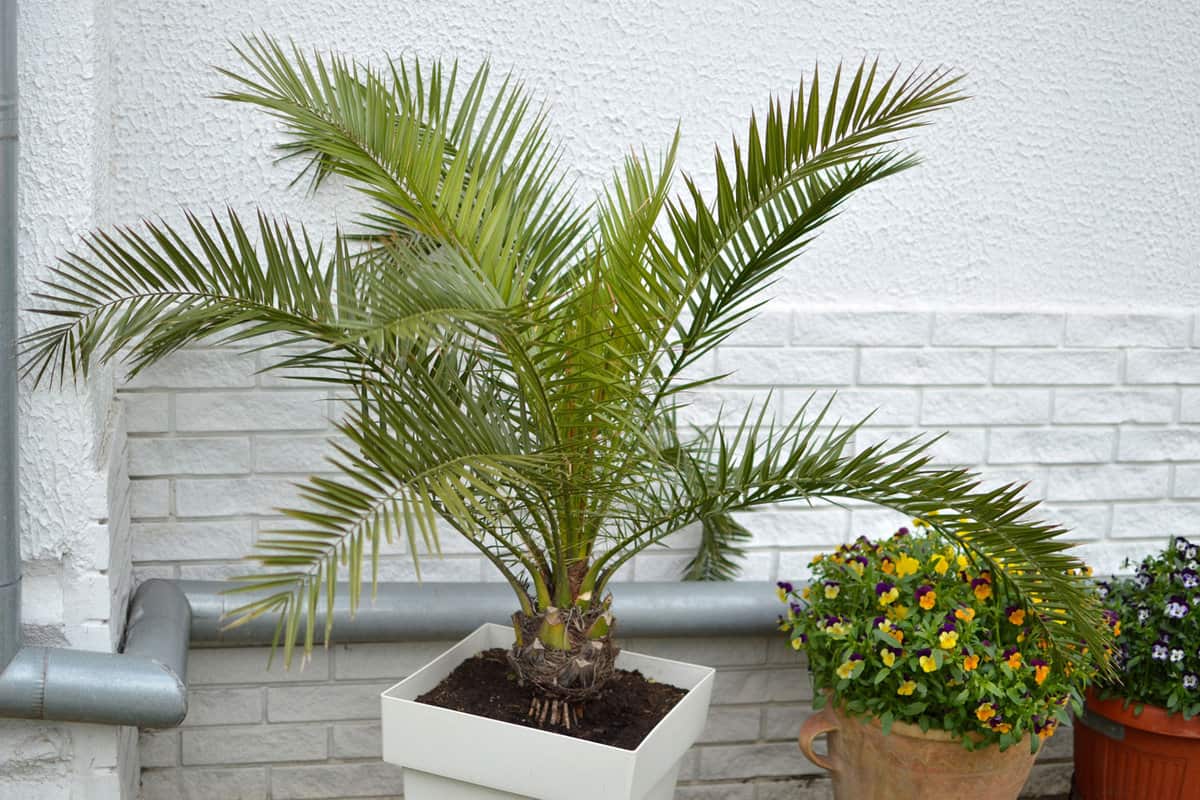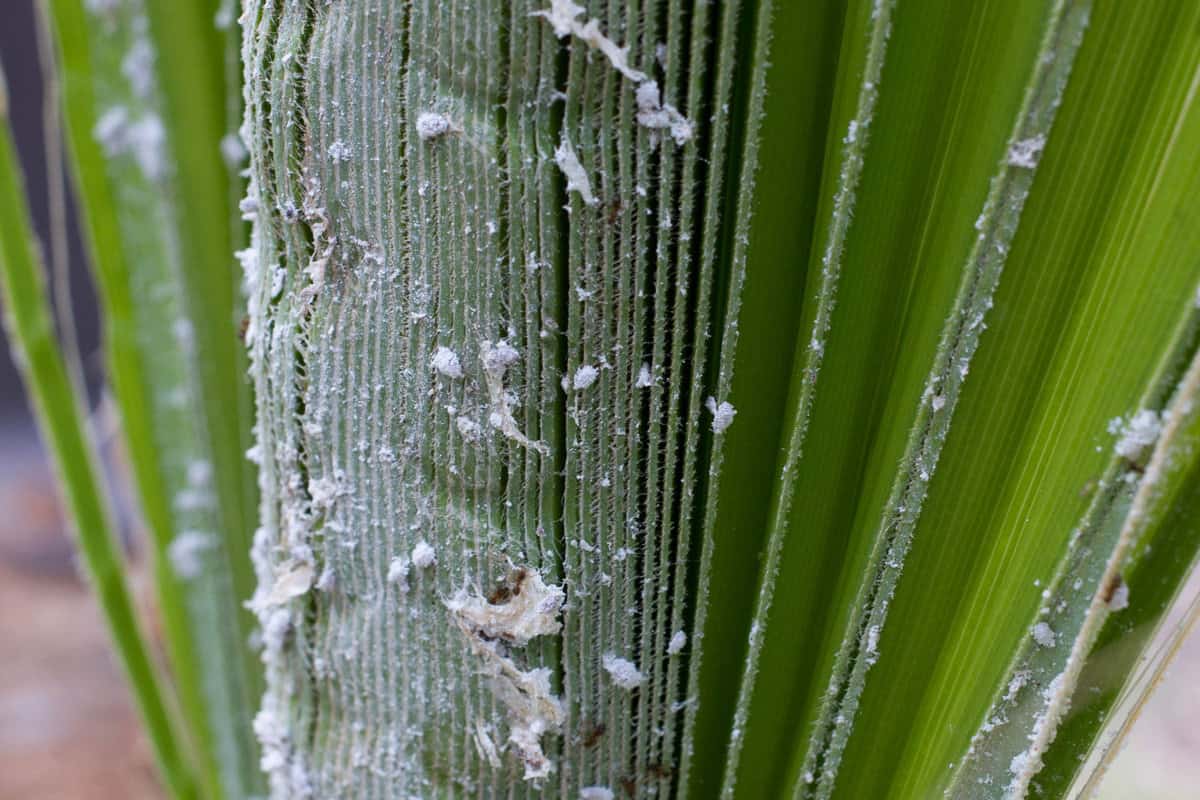You've noticed the tell-tale signs of a spider mite infestation on your beautiful majesty palm - now what? Have no fear, you can save your plants from this common garden pest, and we will tell you how!
We've searched the internet for the most reliable tactics to treat and prevent a spider mite infestation so that now all you have to do is put your plant rescue plan into action.
Since spider mites spread quickly and prefer hot, dry environments, it's essential to protect your plants and keep them in a semi-humid to humid climate. Try these tactics to prevent an infestation from happening at all:
- Increase moisture in the air by turning on a humidifier and spraying or showering your plants regularly
- Quarantine new plants to ensure that they are not infested.
But if an infestation occurs, don't worry! Just try one of these solutions:
- Spray your palm with water and dish soap, horticultural oil, or miticide.
- Spray or wipe the leaves with a mixture of rubbing alcohol and water. Just be sure to patch test, as this could damage the leaves if they're too weak.
- Switch up your treatments to prevent the mites from developing immunity to the oil or miticide.
Repeat several times per week for three or four weeks to ensure that all of the mites are gone.
Unfortunately, spider mites aren't the only pest you have to worry about, as majesty palms are prone to infestations from a few other insects as well.
However, have no fear - we covered the most common majesty palm pests, how to recognize them, and how to treat an infestation, all in this article.
What Do Spider Mites Look Like?

Spider mites are tiny insects that are related to ticks and spiders and feed on plants.
Adult spider mites are light green or yellow and have eight legs, while juveniles have only six. Since they're tiny - about 1/50 of an inch long - they're difficult to spot, even though they can wreak havoc on your plants in a very short amount of time.
Here are a few ways to check and see if your plants are infested:
- See if there are any tiny brown or yellow spots on the leaves of the plant.
- Look for webbing on the plant that looks similar to a spider's web.
- Hold a piece of white paper below the plant and gently shake the leaves. If specks that look like pepper fall on the paper, you have spider mites.
What is the Best Way to Prevent Spider Mites?
Spider mites prefer hot, dry conditions, so keeping a humidifier turned on near your plants will help create an environment that's less appealing to these tiny pests. Being attentive when caring for your plants helps, as well.
Wipe the leaves down once or twice every week with a soft, damp cloth to remove dust and monitor the plants for any signs of mites, or shower your plants in your bathtub or kitchen sink once or twice a month.
Just turn the water pressure to a gentle mist to avoid damaging delicate leaves. If your plant is too big to move, you could also spray it with a spray bottle.
This will help you find and stop an infestation in its tracks before it becomes a big problem.
Click here to view this humidifier on Amazon.
Click here to view this spray bottle on Amazon.
It's also a good idea to be cautious when adding new plants to your collection. Spider mites spread easily and often show up when a new plant has been introduced.
Keep new plants quarantined away from your existing plants for a week or two to check for any signs of infestation.
What is the Best Way to Treat a Spider Mite Infestation?

To treat a spider mite infestation, you have a few options. This is a good thing because spider mites are adaptive little creatures, so to make your treatment more effective, you'll need to switch it up.
Otherwise, the parasites will just become immune to whatever you're spraying on them and come back stronger than before.
Try a few of these methods several times per week for at least three weeks to make sure that your infestation is gone.
Soap and Water
Kick your palm's usual shower up a notch by adding dish soap to kill the mites as the streams of water dislodge them.
Click here to view this dish soap on Amazon.
Miticide
Buy an insecticide that is designed explicitly for killing mites rather than a general insecticide. If you use an insecticide, you'll risk killing off helpful bugs, including other mites that eat spider mites. Spray the palm with water and then spray with the miticide.
Click here to view this miticide on Amazon.
Neem Oil
Neem oil, another horticultural oil, is an excellent choice because it's completely safe and natural. It's probably your best bet if you have children or pets who could be harmed by chemical insecticides.
Neem oil works by disrupting the insects' hormones, thereby shortening their life cycle. Just mix two tablespoons of oil per gallon of water and spray it on your palm's leaves.
Click here to view this neem oil on Amazon.
Can Plants Recover From Spider Mites?

If spider mites attacked only a few leaves, your palm shouldn't need any special care to recover quickly. If, however, the whole palm was attacked, it will probably need some special attention to make a full recovery.
Check out our article My Majesty Palm is Dying - What to Do? for some specific pointers on the best ways to care for a majesty palm. To help your ravaged plant quickly return to its healthy old self, follow these steps:
- Make sure you're following each of the plant's preferences for water, sunlight, and temperature. For example, since majesty palms like lots of sunlight, move it closer to a window. Just be sure also to run a humidifier so you don't risk creating a hot, dry environment that will attract more spider mites! Check our article What Are The Majesty Palm's Light Requirements? for more information.
- Avoid repotting or otherwise changing the plant's environment in a significant way until it has started growing new leaves.
- Give your plant regular nutrition boosts with a quick-release fertilizer that suits its needs.
Click here to view this fertilizer on Amazon.
Do Majesty Palms Attract Other Bugs?

In addition to spider mites, majesty palms also attract thread scales, oyster scales, palm aphids, and mealybugs. Here's a quick rundown of each of these pests and signs that you may have an infestation.
Thread Scales and Oyster Scales
Scales are a type of tiny insects, the females of which are notable for attaching themselves to plants, staying stuck even after they have died. They secrete a waxy coating for protection that looks like a fish scale, which is how they got their common name.
Usually found in clusters, they suck up the sap from the plant and can leave it damaged and weak.
Palm Aphids
Palm aphids are the only species of aphid that feeds on palm trees. They look similar to scale insects but do not permanently adhere to a plant.
They tend to hide in unopened palm fronds to suck out the plant's sap, and their secretions, called honeydew, cause sooty mold fungus.
Mealybugs

Mealybugs are a common garden pest that looks a little bit like a tiny, fuzzy, white, or brown caterpillar. They are related to scale insects, and their waxy secretions can easily be mistaken for fungus or mildew.
These secretions can also cause the development of sooty mold fungus.
How Do I Get Rid of Bugs on My Majesty Palm?

Majesty palms can be prone to bugs, so it's essential to have a few strategies up your sleeves for battling infestations. We've found a few of the best, both natural and chemical-based.
- For light infestations, bring the majesty palm outside and spray it with a hose. Add some dish soap or a miticide for extra cleansing power. Just be sure to use a specific miticide instead of a broad-spectrum insecticide, as you don't want to kill beneficial insects.
- Horticultural oils such as neem oil are especially effective at combatting aphids and scales insects.
- To cut down on the presence of aphids, add ant stakes around the base of your palm. Ants cultivate aphids for their honeydew, even killing their predators, so keeping them away from your majesty palm is a must.
Click here to view these ant stakes on Amazon.








